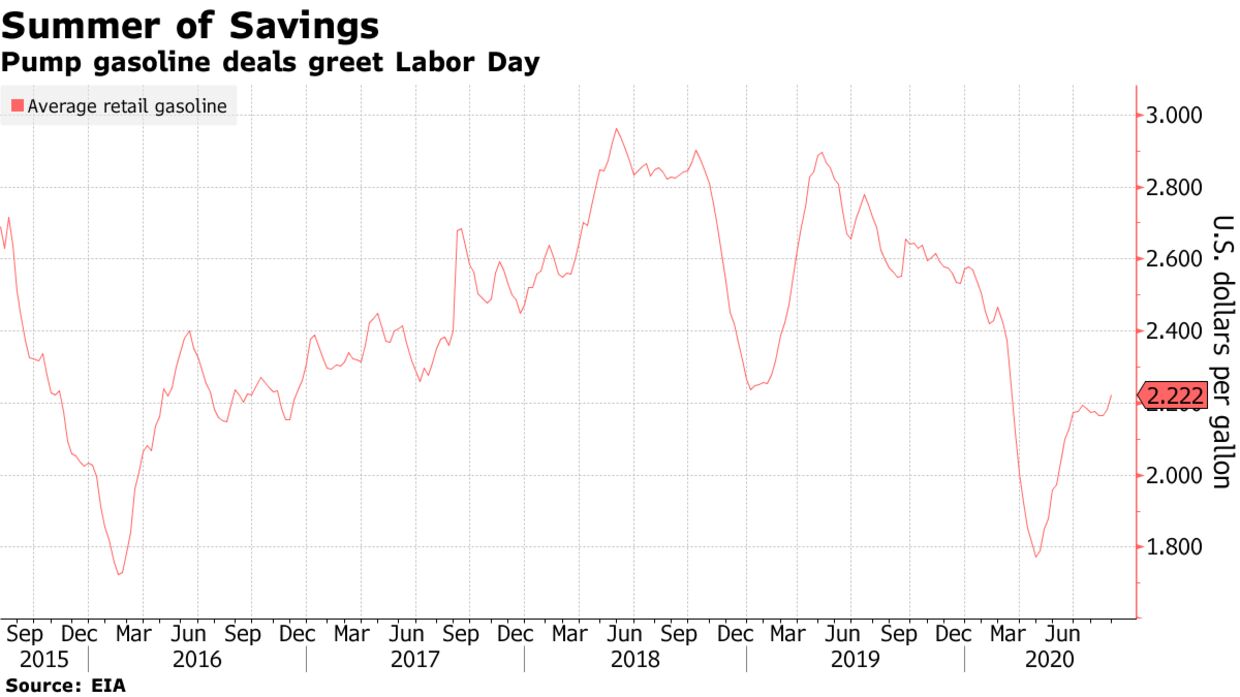U.S. drivers can look forward to cheap gasoline heading into Labor Day Weekend, spelling hard times ahead for an oil industry that’s already been clobbered by the coronavirus. Gasoline prices on average this year are $2.22 per gallon, the lowest for this time of year since 2004, according to the U.S. Energy Information Administration. For the owner of a Ford F-150 with a 26-gallon tank, filling up is almost $10 cheaper compared with last year.

The period immediately after Labor Day will be closely watched by gasoline suppliers to judge the return of back-to-school driving patterns, said Jeff Lenard, vice president at the trade group Advancing Convenience and Fuel Retailing. “The two next weeks’ demand will be the best indicator of how far the commuting and jobs market has returned,” he said.
Historically, demand is languishing. The EIA’s moving average for product supplied, the government’s best indicator of demand, was at 8.87 million barrels a day for the week ending August 28, about 772,000 barrels a day below the five-year average.
Soon after Labor Day, gasoline prices are expected to begin their descent as refineries switch to producing fall and winter-grade gasoline. Colonial Pipeline, the nation’s largest fuel conduit that stretches from the Gulf Coast to New York Harbor, will begin shipping its first batches of the cheaper-to-make fuel next week.
Weaker prices are hitting fuel makers hard. The margin to refine a barrel of crude into fuel, as measured by futures prices, is stuck below $10 a barrel, the lowest for this time of year in almost a decade. The lower margins make it difficult to turn a profit and may prompt refineries shuttered along the U.S. Gulf Coast ahead of Hurricane Laura to remain in repose.
“I don’t think anyone is expecting any kind of monster increase in demand here down the stretch,” said Robert Yawger, director of the futures division at Mizuho Securities. “There is no demand,” he said. “So there is no reason to run refineries harder.”
